If it’s been a few years since you last bought a car, your next one will likely have more electronic safety systems than whatever you’re driving now does. And that’s a good thing. The latest systems in new cars can help warn of vehicles out of your line of sight, make parallel parking easier, and even help maintain a safe distance in traffic or keep your car in its lane.
Most modern safety features are available on a wide variety of vehicles, from inexpensive compact sedans to luxury models. But not all are offered at every trim level, and manufacturers often bundle them together with expensive navigation systems or tech packages that can cost thousands—and include other options you may not want. Also be aware that carmakers often use their own branded names for these features. These systems are important and helpful, but it pays to shop carefully—and to know what you’ll get for your money.
Here’s a quick look at what’s available.
1. Adaptive Cruise Control
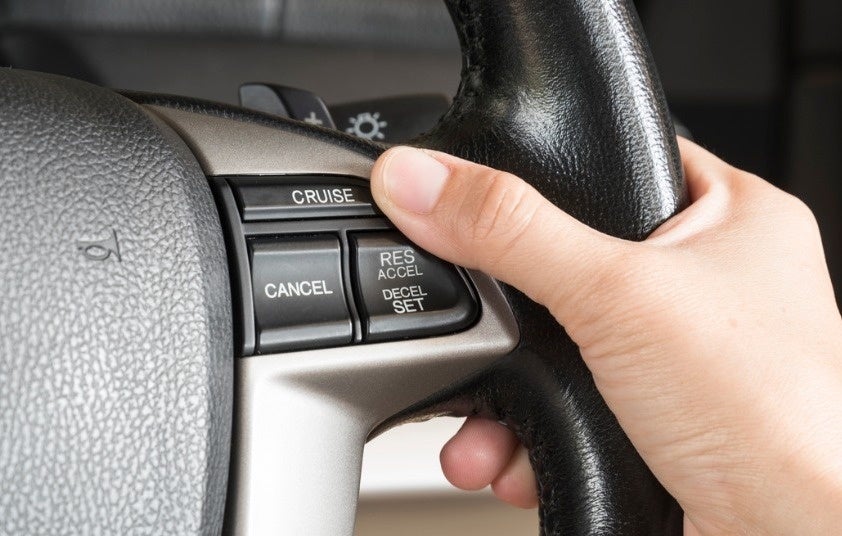
Able to not only maintain a preset speed like conventional cruise control, adaptive cruise control accelerates and slows your car to keep pace with highway traffic. Using a combination of radar, cameras, and computer power, adaptive cruise control will lift the throttle and apply the brakes as needed if you’re closing in on a car ahead. When the road opens up, it brings you back to the desired speed. Some systems work only above a certain speed threshold, but the best can function even in stop-and-go traffic, bringing your car to a full stop and re-accelerating as conditions permit.
Examples: Chrysler Adaptive Cruise Control Plus with Full Stop, Ford Adaptive Cruise Control, Honda Adaptive Cruise Control, Nissan Intelligent Cruise Control
2. Blind-Spot Warning
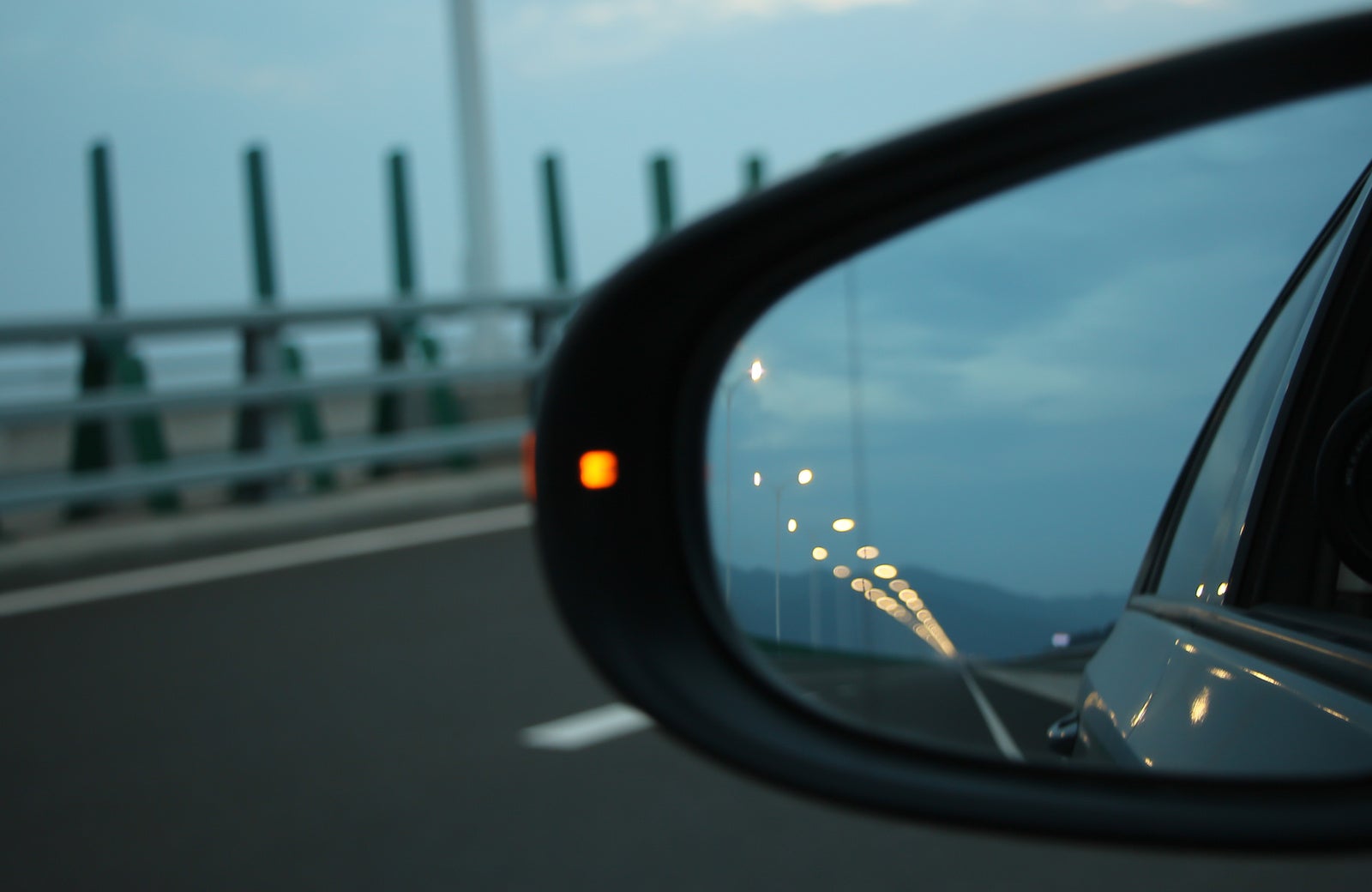
A real safety aid on fast-moving, crowded highways and especially in foul weather, blind-spot warning systems use cameras or radar to monitor traffic in adjacent lanes. If a vehicle is detected to the side or slightly behind you and out of sight, a blind-spot warning system will activate a warning light mounted in or near the outside mirror on the appropriate side. And that makes it that much easier to know when it’s safe to change lanes.
Examples: Ford Blind-Spot Information System, Chrysler Blind-Spot Monitoring, Subaru Blind-Spot Detection, Volvo Blind-Spot Information System
3. Cross-Traffic Alert
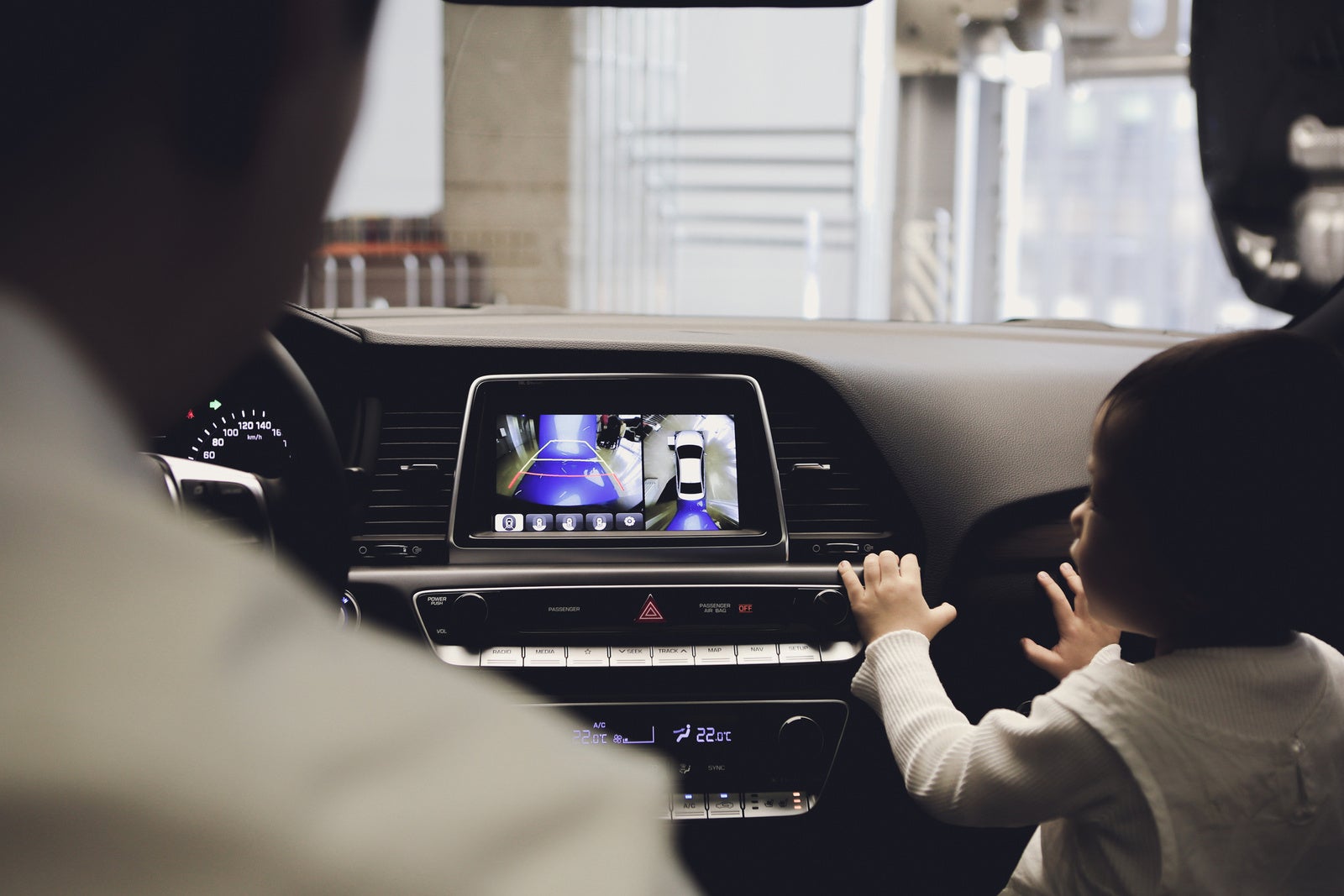
Just what you need in a busy parking lot, a cross-traffic alert uses radar to detect approaching vehicles when you put it in reverse to back out of a parking space. If it senses a vehicle coming from either side, it will sound a warning, and most likely before you’re able to see it—especially if you’re surrounded by big SUVs. Some systems will even apply the brakes if a crash is imminent.
Examples: Chevrolet Rear Cross-Traffic Alert, Chrysler Rear Cross Path, Nissan Rear Cross-Traffic Alert, Subaru Rear Cross-Traffic Alert
4. Lane-Departure Warning
Once again using cameras and/or radar, lane-departure warning systems monitor lane markings as you drive on highways and secondary two-lanes, and give an audible and/or visual warning if your tires start to cross the line. Some systems from General Motors even vibrate the driver’s seat cushion on the same side the vehicle is straying as an additional warning.
Examples: Cadillac Lane-Departure Warning with Safety-Alert Seat, Honda Lane-Departure Warning, Toyota Lane-Departure Alert
5. Lane-Keep Assist
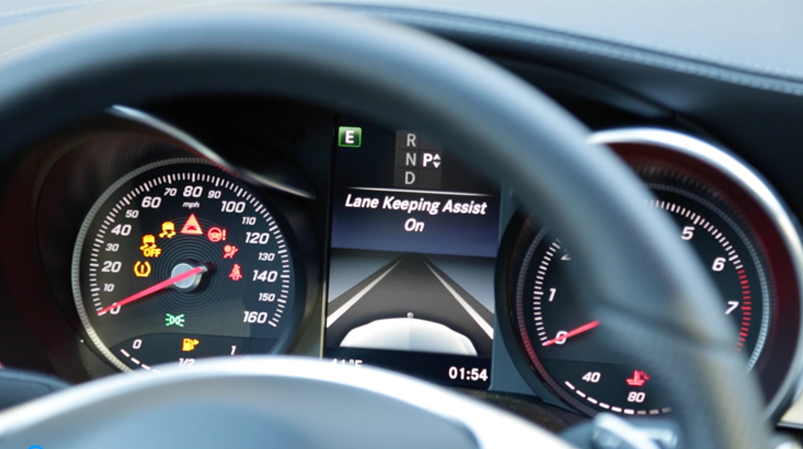
Like many of these technologies, lane-keep assist takes us another step closer to the self-driving, or autonomous, car. Taking lane-departure warning a step further, lane-keeping systems will provide steering input to keep a car on its intended path if a warning goes ignored, nudging inattentive drivers back into their own lane. But hands-off driving is not allowed. If the driver takes both hands off the wheel, the system will first provide a warning and then disengage if the driver doesn’t re-take the wheel.
Examples: Chevrolet Lane-Keep Assist, Mercedes-Benz Active Blind-Spot Assist, Chrysler Lane-Keep Assist, Honda Lane-Keeping Assist System
6. Forward-Collision Warning
Using the same type of camera, radar, or laser-based technology as adaptive cruise control, forward-collision warning provides a visual and audible warning when a rear-end collision with a vehicle or obstacle ahead is imminent. Most systems respond with increasing levels of urgency as the danger nears, with dashboard or windshield-displayed warnings changing from yellow to red and audible warnings increasing in urgency.
Examples: Chevrolet Forward-Collision Alert, Honda Forward-Collision Warning, Nissan Predictive Forward-Collision Warning
7. Brake Assist
This technology goes to work when it senses a driver is initiating a panic stop and supplements their efforts by providing maximum braking force without locking up the wheels and causing a skid. Working in concert with the antilock braking systems on all cars, brake assist can provide more control and shorter stopping distances than almost any driver can pull off on their own.
Examples: Ford Brake Support, Honda Collision-Mitigation Braking System, Toyota Brake Assist
8. Automatic Emergency Braking

Rather than simply providing assistance when a driver slams on the brakes, vehicles with automatic braking will apply the brakes in an emergency if the driver fails to do so. In a best-case scenario, automatic braking can prevent a collision. If not, it can at least mitigate the severity of a crash and resulting injuries or damage. Typically found on vehicles equipped with forward-collision warning, automatic braking systems use similar radar, laser, or camera-based technology to monitor traffic and detect obstacles ahead and will warn of danger with visual and/or audible signals before taking over if the driver doesn’t respond.
Examples: Chrysler Forward-Collision Warning Plus, Honda Collision-Mitigation Braking System, Toyota Pre-Collision System with Pedestrian Detection
9. Parental/Employer Controls and Monitoring
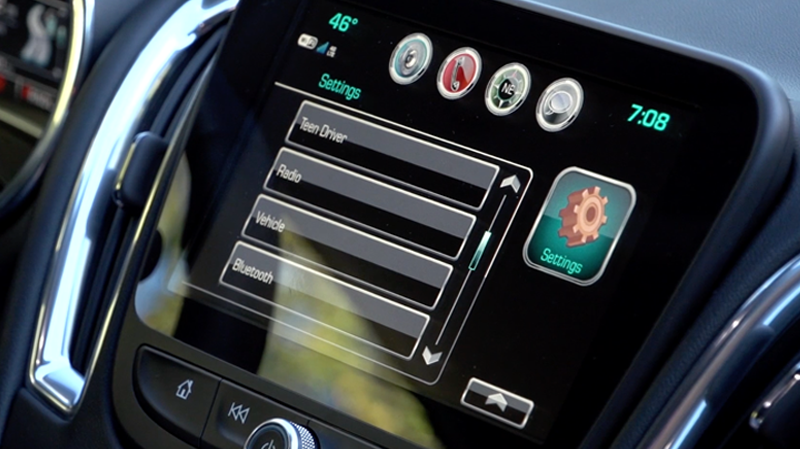
A few carmakers including Ford and General Motors offer systems to help parents or employers monitor drivers and encourage safer behavior. These systems will do everything from setting electronic speed limits to restricting audio listening if seatbelts are not fastened and from monitoring speed and distance traveled to reporting instances in excess of preset limits.
Examples: Ford My Key, Chevrolet Teen-Driver Vision
10. Pedestrian Detection
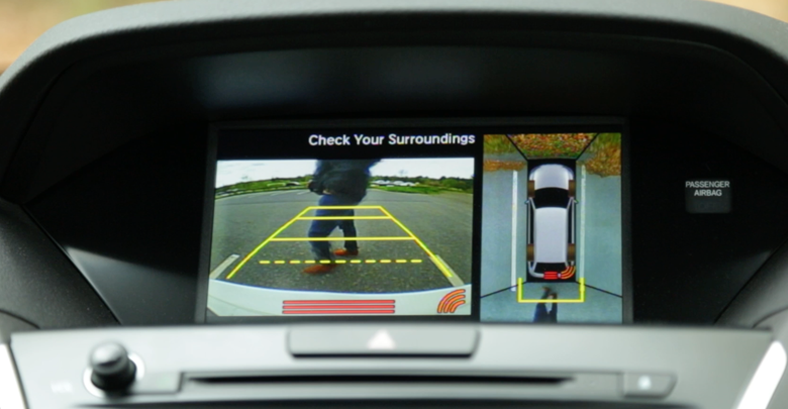
A more advanced version of forward-collision warning and automatic emergency braking, pedestrian detection systems can identify a person or bicyclist ahead or beginning to cross a vehicle’s path. The systems can then display warnings and apply brakes as necessary. Some advanced systems from manufacturers including BMW and Cadillac use heat-sensitive thermal infrared technology, combining a special camera and on-board processor to better identify humans or animals at night or farther down the road than detectable by other systems, headlights, or the human eye.
Examples: Cadillac Night Vision, BMW Night Vision with Pedestrian Detection, Volvo City Safety
11. 360-Degree Camera
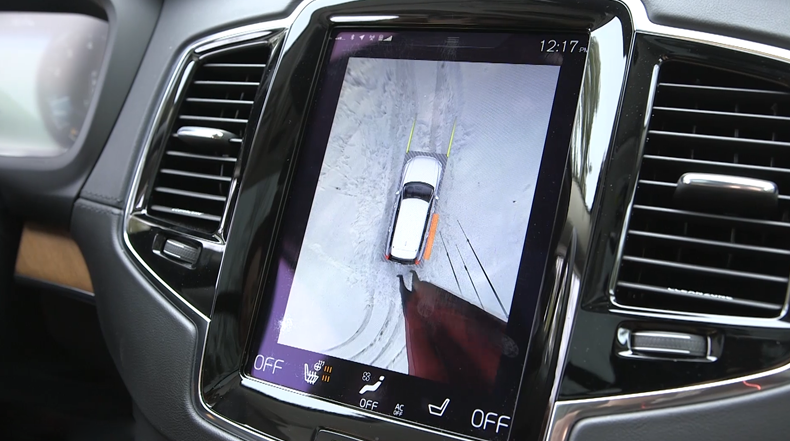
Also known as surround view or bird’s-eye view cameras, 360-degree camera systems combine images from cameras mounted at the front, rear, and under side mirrors or other locations into a single view of the vehicle seen from above and displayed on the vehicle’s center screen. Drivers can then monitor everything around them as they’re backing and maneuvering in tight places, even at night.
Examples: BMW Surround View Camera System with 3D View, Nissan Around View Monitor, Volvo 360 Surround View
12. Parking Assists
Several systems are available to make life easier for the parking challenged, from basic audible warnings to others that do all the work. Simple bumper-mounted ultrasonic sensors emit an intermittent beep as you get closer to objects, with an increasing urgency that develops into a steady wail before impact. Backup cameras add a visual aid, are now widely available, and are federally required beginning with 2018 models. But the ultimate solution is self-parking systems from BMW, Chrysler, Ford, and others. These let drivers just pull up ahead of an available space, press a button, and focus on the braking while their car uses its own sensors and cameras to steer itself into a space.
Examples: Ford Active Park Assist, Chrysler ParkSense Park Assist, BMW Parking Assistant
Related Topics
How To Choose Between Gas, Diesel, Hybrid, and Electric Cars
Should I Buy an Extended Warranty?
A Beginner’s Guide to Car Tires
